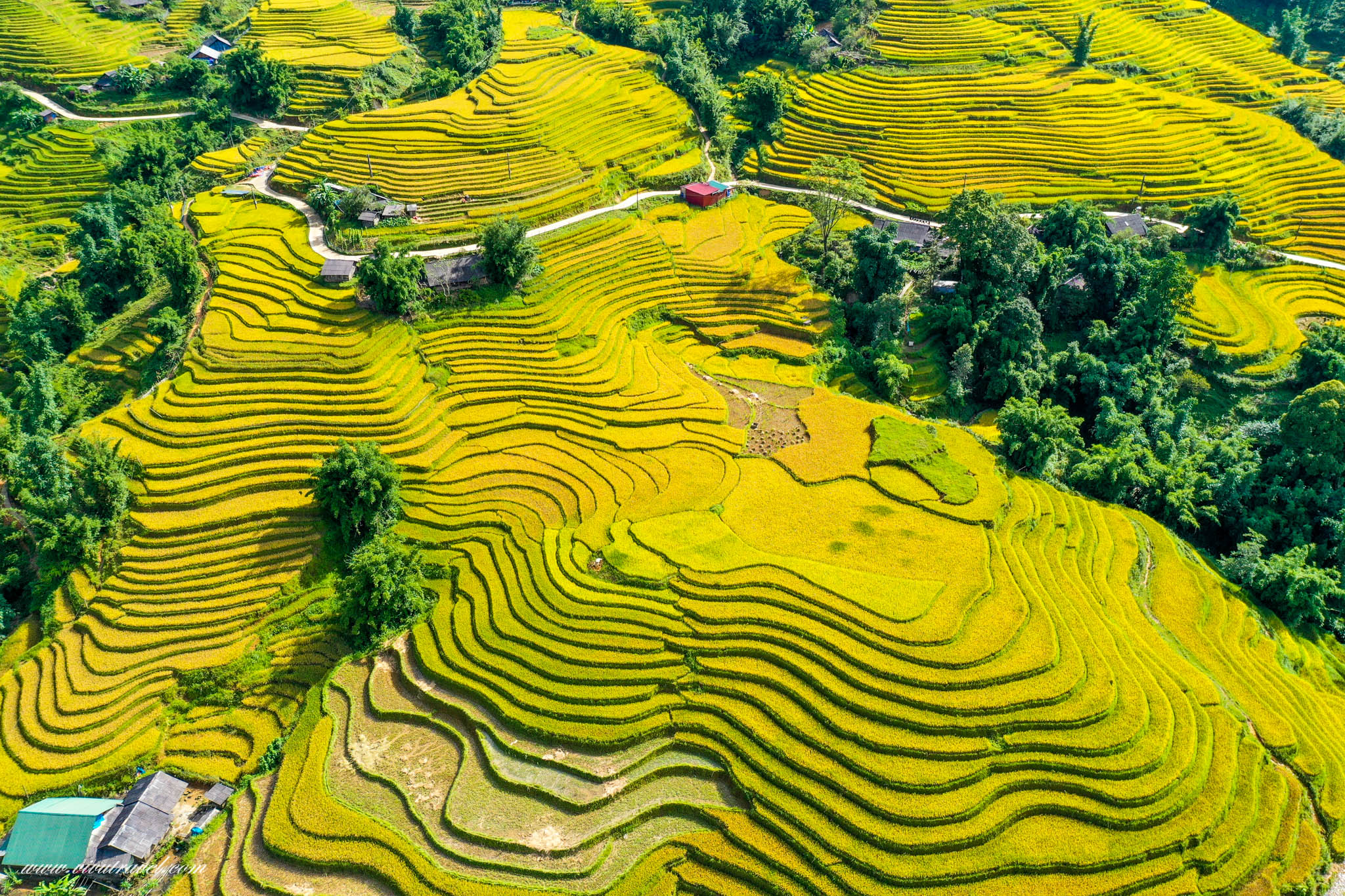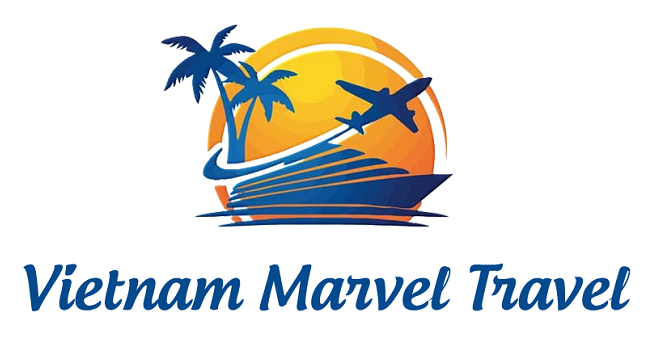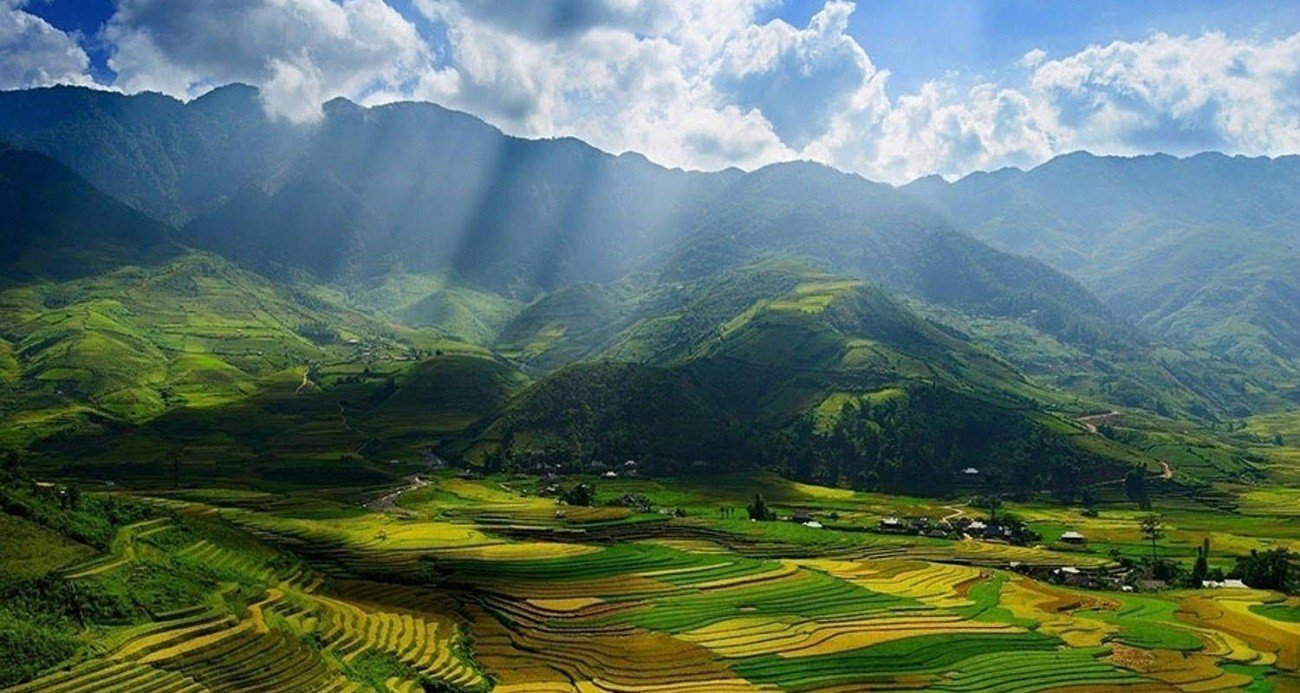Best Time to Visit Vietnam 2026-2027: 12 Ultimate Seasonal Guides
Vietnam, a nation of breathtaking landscapes and vibrant culture, offers different experiences depending on when you visit. Planning ahead for 2026-2027? This comprehensive guide breaks down the optimal times to explore this Southeast Asian gem by region, season, and travel intent.
Vietnam’s Climate Overview: Best Time to Visit Vietnam and What to Expect in 2026-2027
Vietnam’s geography creates a fascinating climate puzzle that travelers must understand before planning their journey. Stretching over 1,600 kilometers from north to south, the country experiences dramatically different weather patterns simultaneously.
Based on meteorological forecasts and climate trend analysis, Vietnam’s weather patterns for 2026-2027 will follow historical trends with some adjustments due to climate change factors. Most notably:
- Northern Vietnam: Expect slightly warmer winters (average 1.2°C higher than historical norms)
- Central Vietnam: Typhoon season may extend longer into December
- Southern Vietnam: Dry season could feature more intense heat waves
Understanding these regional differences is crucial for planning your perfect Vietnamese adventure. Let’s explore each region in detail.

Northern Vietnam’s Four Distinct Seasons (Hanoi, Halong Bay, Sapa)
Northern Vietnam embraces all four seasons, each offering a unique perspective on the region’s beauty. From the misty mountains of Sapa to the emerald waters of Halong Bay, timing your visit correctly makes all the difference.
Spring (March-May): Nature’s Revival
Spring transforms Northern Vietnam into a vibrant tapestry of colors and pleasant temperatures.
- Temperature range: 20-28°C (68-82°F)
- Rainfall: Moderate (40-120mm monthly)
- Humidity: 75-85%
This is prime time for exploring Halong Bay’s 1,969 limestone islands by cruise ship. The clear skies and calm waters create perfect conditions for kayaking and cave exploration. Discover our specially curated Northern Vietnam 6-day itinerary that maximizes these perfect spring conditions.
Pro Tip: Book your Halong Bay cruise for mid-April 2026 to experience the annual Heritage Festival with special cultural performances aboard select luxury vessels.
Summer (June-August): Tropical Heat and Monsoons
Summer brings tropical heat and dramatic afternoon downpours to Northern Vietnam.
- Temperature range: 30-37°C (86-98°F)
- Rainfall: Heavy (180-300mm monthly)
- Humidity: 80-90%
Despite the rain, summer offers unique advantages: lush rice terraces in Sapa reach peak greenery during July and August. The famous Mu Cang Chai rice terraces span over 2,200 hectares and transform into a stunning emerald landscape during this season.
Traveler Alert: Prepare for potential flash flooding in urban areas of Hanoi, particularly in the Old Quarter, where drainage systems may be overwhelmed during heavy rainfall events.

Autumn (September-November): The Golden Season
Many travelers consider autumn the most magical time to visit Northern Vietnam.
- Temperature range: 22-30°C (72-86°F)
- Rainfall: Decreasing (30-180mm monthly)
- Humidity: 65-75%
The moderate temperatures and dropping humidity create perfect conditions for sightseeing and photography. Halong Bay waters are especially clear with visibility extending up to 15 meters beneath the surface during October and November.
In Sapa, the rice harvest paints terraced fields in golden hues, creating a photographer’s paradise across 7,000 hectares of terraced landscapes.
Winter (December-February): Crisp Mountain Air and Occasional Fog
Winter brings cooler temperatures and atmospheric mists to Northern Vietnam.
- Temperature range: 15-22°C (59-72°F)
- Rainfall: Minimal (20-50mm monthly)
- Humidity: 60-70%
While temperatures in Hanoi remain moderate, mountainous regions like Sapa can drop to 5°C (41°F) or lower, occasionally receiving frost or even snow on the highest peaks above 2,800 meters. The winter mists create a mystical atmosphere for photography enthusiasts.
Unique Winter Experience: In January 2026, visit during Vietnam’s traditional Lunar New Year (Tet) to witness elaborate celebrations and cultural performances across Northern Vietnam.
Central Vietnam’s Reversed Monsoon Pattern (Hue, Da Nang, Hoi An)
Central Vietnam follows a weather pattern distinct from both the north and south, with a rainy season that arrives later in the year.
Dry Season Delight (February-August)
The extended dry season makes Central Vietnam a reliable beach destination for much of the year.
- Temperature range: 24-34°C (75-93°F)
- Rainfall: Minimal (30-100mm monthly)
- Humidity: 75-85%
Da Nang’s coastline stretches for 30 kilometers with pristine beaches like My Khe and Non Nuoc enjoying 6-8 hours of sunshine daily during this period. The UNESCO World Heritage town of Hoi An shines with 2,000+ preserved ancient buildings that are best explored during these dry, sunny months.
Cultural Highlight: Plan your visit to Hue in June 2026 for the biennial Hue Festival, featuring performances from over 400 artists at 15 venues throughout the former imperial capital.
Rainy Season Challenges (September-January)
The central coast faces its most challenging weather during these months.
- Temperature range: 19-29°C (66-84°F)
- Rainfall: Heavy (300-550mm monthly)
- Humidity: 85-95%
October and November typically bring the heaviest rainfall, with potential flooding in Hoi An’s Ancient Town, where waters have historically risen up to 2 meters during severe events. Coastal areas may face storm surges during typhoons that approach within 200 kilometers of shore.
Weather Alert: Climate models suggest November 2026 may see increased typhoon activity in Central Vietnam. Consider adjusting travel plans accordingly or securing comprehensive travel insurance.
Southern Vietnam’s Tropical Consistency (Ho Chi Minh City, Mekong Delta, Phu Quoc)
Southern Vietnam embraces a more predictable tropical climate with two distinct seasons.
Dry Season Paradise (December-April)
The dry season transforms Southern Vietnam into a sun-drenched playground.
- Temperature range: 26-35°C (79-95°F)
- Rainfall: Minimal (0-80mm monthly)
- Humidity: 65-75%
This is prime time for exploring the Mekong Delta’s 41,000 square kilometers of waterways and floating markets. The famous Cai Rang floating market hosts up to 400 boats each morning during peak season. Meanwhile, Phu Quoc Island enjoys 300+ hours of sunshine monthly with sea temperatures hovering at a perfect 28°C (82°F).
Exclusive Experience: February 2026 coincides with the harvest of Phu Quoc’s famous black pepper, where 1,200 hectares of pepper farms offer tours showcasing Vietnam’s premium spice production.
Wet Season Adaptations (May-November)
The wet season brings daily downpours but rarely disrupts travel plans significantly.
- Temperature range: 25-33°C (77-91°F)
- Rainfall: Heavy (150-300mm monthly)
- Humidity: 80-90%
Rain typically falls in predictable afternoon bursts lasting 2-3 hours, leaving mornings clear for sightseeing. The Mekong Delta transforms with water levels rising 3-4 meters, creating deeper channels for boat tours and greener landscapes.
Travel Tip: May-June 2026 offers a sweet spot with fewer tourists, seasonal fruit harvests featuring 6 varieties of mangoes and durian, plus good weather between rain showers.
Special Events and Festivals Worth Planning Around (2026-2027)
Vietnam’s cultural calendar brims with celebrations that can enhance your travel experience exponentially.
Tet Nguyen Dan (Vietnamese Lunar New Year)
Dates: February 8-14, 2026 | January 29-February 4, 2027
This weeklong celebration transforms the entire country with:
- Elaborate flower markets featuring 130+ varieties of blossoms
- Family reunions drawing 45% of urban residents back to their ancestral villages
- Traditional ceremonies at 11,000+ temples and pagodas nationwide
Insider Knowledge: While many businesses close during Tet, major tourist attractions remain open. Hotels often charge 30-50% premiums during this period, so book accommodations at least 5 months in advance.
Mid-Autumn Festival (Tết Trung Thu)
Dates: September 13, 2026 | October 2, 2027
This magical children’s festival illuminates Vietnam with:
- Handcrafted lanterns in 20+ traditional styles
- Lion dance performances by 300+ troupes nationwide
- Mooncake varieties reaching 50+ flavors from traditional to innovative
Hoi An’s celebration stands out with 8,000+ lanterns floating on the Thu Bon River, creating one of Vietnam’s most photogenic spectacles.
Regional Festivals Worth Experiencing
- Hue Festival: June 2026 (biennial) – 9 days of imperial reenactments, traditional music, and cultural performances across 15 venues
- Da Lat Flower Festival: December 2026 – Showcasing 3,000+ flower varieties across 7 exhibition zones
- Lim Festival: February 2026 – Ancient “quan họ” folk singing with 200+ performers in traditional dress near Hanoi
Specialty Travel Experiences: When to Visit Based on Interest
Different travel interests call for specific timing to maximize your Vietnamese adventure.
Adventure and Trekking Expeditions
Prime months: March-April and October-November
The moderate temperatures and clearer skies during these months create ideal conditions for:
- Sapa trekking: Explore 60+ kilometers of marked trails through terraced landscapes
- Ha Giang motorcycle loops: Navigate 350 kilometers of mountain roads with 2,000+ meter elevation changes
- Pu Luong Nature Reserve: Hike through 17,600 hectares of pristine forest with 500+ animal species
Adventure Highlight: October 2026 coincides with the Vietnam Mountain Marathon in Sapa, featuring races across 10km, 21km, 42km, 70km, and 100km courses through ethnic minority villages and spectacular scenery. Experience the full range of Vietnam’s breathtaking landscapes on our comprehensive 8-day tour.
Food Tourism and Culinary Experiences
Prime months: December-March
These months offer the perfect climate for outdoor dining and market exploration, plus:
- Seafood season: December-January brings peak harvests with 300+ seafood varieties at coastal markets
- Fruit harvests: January-March features 15+ exotic fruit varieties at their peak flavor
- Coffee experiences: March marks harvest completion with freshest beans at Vietnam’s 23,000 coffee plantations
Culinary Experience: February 2026 in Hue offers special imperial cuisine cooking classes where you’ll learn to prepare 9 traditional royal dishes under the guidance of descendants of imperial chefs.
Beach and Island Relaxation
Prime months: February-August (Central beaches) | November-April (Southern beaches)
Vietnam’s 3,260 kilometers of coastline offers different optimal periods:
- Con Dao Islands: March-May provides 8+ hours of daily sunshine with visibility up to 20 meters for snorkeling
- Nha Trang: June-August features water temperatures of 28°C (82°F) and wave heights under 0.5 meters
- Phu Quoc: December-February offers 25+ days of sunshine monthly with pristine beach conditions
Unique Beach Experience: April 2026 in Phu Quoc coincides with the bioluminescent plankton phenomenon, where 5 specific beaches glow blue at night during the new moon phase.
Expert Travel Planning Tips for Best Time to Visit Vietnam 2026-2027
Maximize your Vietnamese adventure with these strategic planning insights:
Optimal Booking Windows
- International flights: Book 5-7 months ahead for savings averaging 23% on long-haul routes
- Luxury accommodations: Secure 4-6 months prior, especially for properties with fewer than 50 rooms
- Popular cruises: Reserve Halong Bay luxury experiences 3-4 months ahead for optimal cabin selection
Money-Saving Tip: January 15-30, 2026 falls within a “shoulder season” sweet spot with 15-25% discounts at many 4-5 star properties throughout Vietnam.
Transportation Strategies
- Domestic flights: Morning departures have 72% better on-time performance than afternoon options
- Train journeys: The 36-hour Reunification Express from Hanoi to Ho Chi Minh City offers 4 cabin classes through 1,726 kilometers of diverse landscapes
- Private transfers: Pre-arranged services cost 30-40% less than on-demand airport taxis with higher quality vehicles
Transportation Insight: The new Cat Linh-Ha Dong metro line in Hanoi provides connections to 12 key districts with trains every 6 minutes during peak hours.
Weather Contingency Planning
- Typhoon season: Travel insurance with weather disruption coverage is essential for Central Vietnam visits from September-December
- Flooding preparations: Book accommodations on higher floors in Hoi An and Hue during October-November
- Heat management: Schedule outdoor activities before 11am or after 4pm when visiting Southern Vietnam from February-April
Climate Note: August 2026 is projected to be 1.5°C warmer than historical averages in Southern Vietnam, making early morning activities particularly valuable.
Regional Breakdown: Absolute Best Months by Location
After analyzing thousands of traveler reports, climate data, and event calendars, here are the definitive best times to visit Vietnam’s most popular destinations in 2026-2027:
Northern Vietnam’s Prime Periods
- Hanoi: October 5-November 15, 2026 – 85% chance of clear skies with temperatures averaging 24°C (75°F)
- Halong Bay: March 15-April 20, 2026 – Water visibility reaches 12+ meters with minimal tourist crowds
- Sapa: September 15-October 25, 2026 – Rice harvest colors peak with comfortable 18-25°C (64-77°F) temperatures
Central Vietnam’s Golden Windows
- Hoi An: February 20-April 10, 2026 – 80% chance of sunshine with ideal photography lighting in the Ancient Town
- Da Nang: May 10-July 20, 2026 – Beach conditions rated “excellent” with 28°C (82°F) average water temperature
- Hue: March 1-30, 2026 – Imperial sites enjoy optimal lighting with 65% humidity and minimal rainfall
Southern Vietnam’s Ideal Timeframes
- Ho Chi Minh City: December 15, 2026-February 28, 2027 – Urban heat index reaches comfortable levels with clearest air quality
- Mekong Delta: January 5-February 15, 2026 – Fruit harvests at peak with ideal water levels for exploring canals
- Phu Quoc: February 1-March 15, 2026 – 95% chance of clear skies with perfect 28°C (82°F) beach conditions
Conclusion: The Ultimate Best Time to Visit Vietnam in 2026-2027
There’s no single “perfect” time to visit all of Vietnam, as each region follows its own climate patterns and cultural rhythms. However, based on comprehensive analysis of weather patterns, crowd levels, and special events:
March 2026 emerges as perhaps the most versatile month for experiencing Vietnam’s diverse offerings. During this period:
- Northern Vietnam enjoys spring bloom with comfortable 20-25°C (68-77°F) temperatures
- Central Vietnam basks in dry, sunny days ideal for beach and cultural exploration
- Southern Vietnam transitions from peak season to shoulder season, offering good weather with decreasing crowds
If your schedule allows, October 2026 provides another excellent window, particularly for those focused on northern and central regions.
Ultimately, the best time to visit Vietnam depends on your specific interests, regional focus, and comfort preferences. With careful planning using this guide, your 2026-2027 Vietnam adventure promises unforgettable experiences regardless of when you choose to visit.
Discover Vietnam’s countless wonders with our expertly crafted itineraries designed to showcase each region during its absolute prime.
📞 Contact Information
- Website: vietnammarveltravel.com
- Email: vietnammarveltravel@gmail.com
- Phone: +84.978.358.422
- WhatsApp: +84 978.358.422
-
Vietnam Marvel Travel – Your Gateway to Authentic Vietnam Experiences

